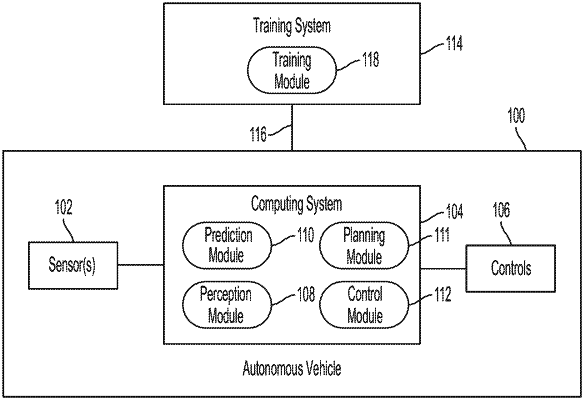| CPC G06V 20/588 (2022.01) [G06N 3/04 (2013.01); G06N 3/08 (2013.01); G06V 10/82 (2022.01); G06V 20/58 (2022.01); G08G 1/01 (2013.01); G08G 1/123 (2013.01)] | 16 Claims |

|
1. A method for predicting a location of a target vehicle, the method comprising:
receiving, by a processor, trajectory information for the target vehicle;
determining, by the processor, a trajectory feature for the target vehicle based on the trajectory information, wherein the trajectory feature includes velocity and position information for the target vehicle;
determining, by the processor, a first lane feature of a first lane and a second lane feature of a second lane, wherein the first lane and the second lane are within a threshold vicinity of the target vehicle, wherein the determining of the first lane feature includes identifying a first geographic coordinate of the first lane, and the determining of the second lane feature includes identifying a second geographic coordinate of the second lane;
determining, by the processor, a first probability associated with the first lane based on the trajectory feature and the first lane feature, and a second probability associated with the second lane based on the trajectory feature and the second lane feature, wherein the first probability is indicative of a first likelihood that the target vehicle will enter the first lane, and the second probability is indicative of a second likelihood that the target vehicle will enter the second lane;
identifying, by the processor, at least one of the first lane or the second lane based on a consideration of the first probability and the second probability; and
predicting, by the processor, a location of the target vehicle in an upcoming time period based on at least one of the first lane feature or the second lane feature, and the trajectory feature.
|